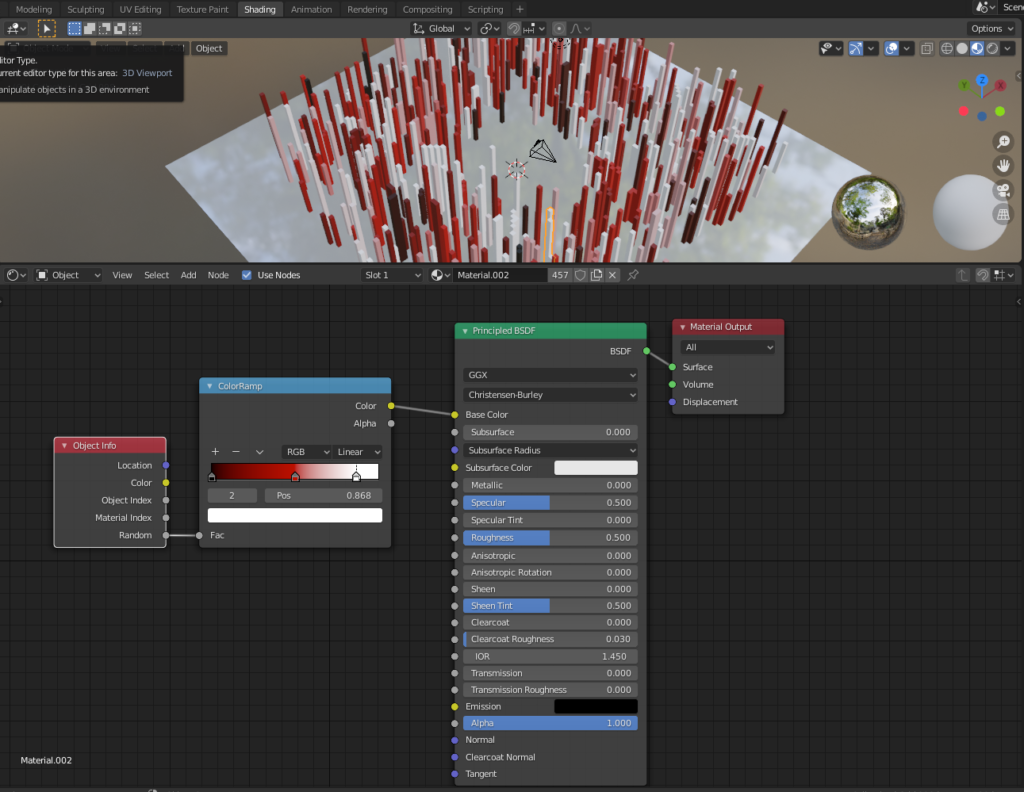Written version:
Continue reading “How to do 3D-projection mapping with Blender”Basics of Using Cryptomatte in Blender 2.93
In the buttons area (on the right side of the interface), select the “View layer properties” tab.

Under “cryptomatte” turn on “object”, “material” or “asset”. I like “asset” since it let’s me select entire rigs that consist of several parts.

Go to the “compositing” workspace.

Turn on “use nodes”.

Add a viewer node with shift+a –> output –> viewer.

Add the cryptomatte node from Matte –> Cryptomatte.

Connect the image output from the render layers node to the image input of the Cryptomatte node. Connect the “pick” output from the Cryptomatte node to the image input of the viewer node. Render the scene (keyboard shortcut F12).
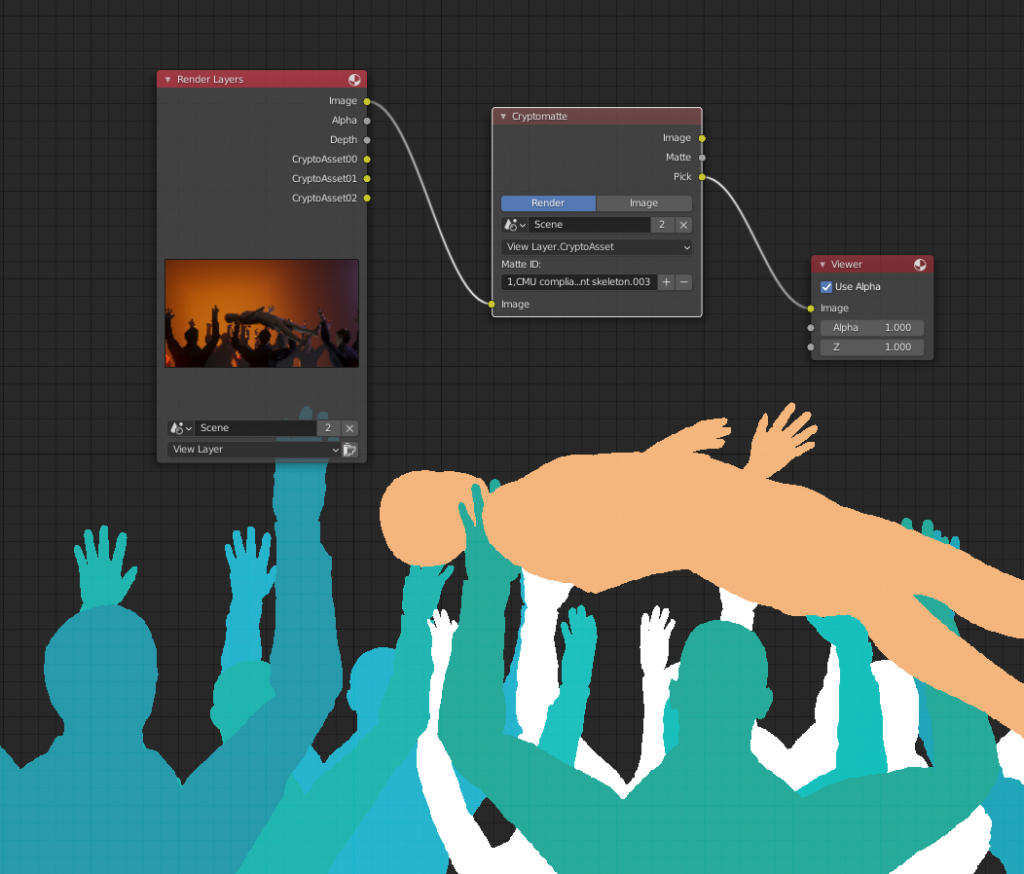
You should now see different matte colors that identify different assets in your render layer. Use the + button to access the eyedropper tool and select as many assets as you need for the matte you are building.
To see the actual matte, you can plug the “matte” output from the Cryptomatte node to the viewer.
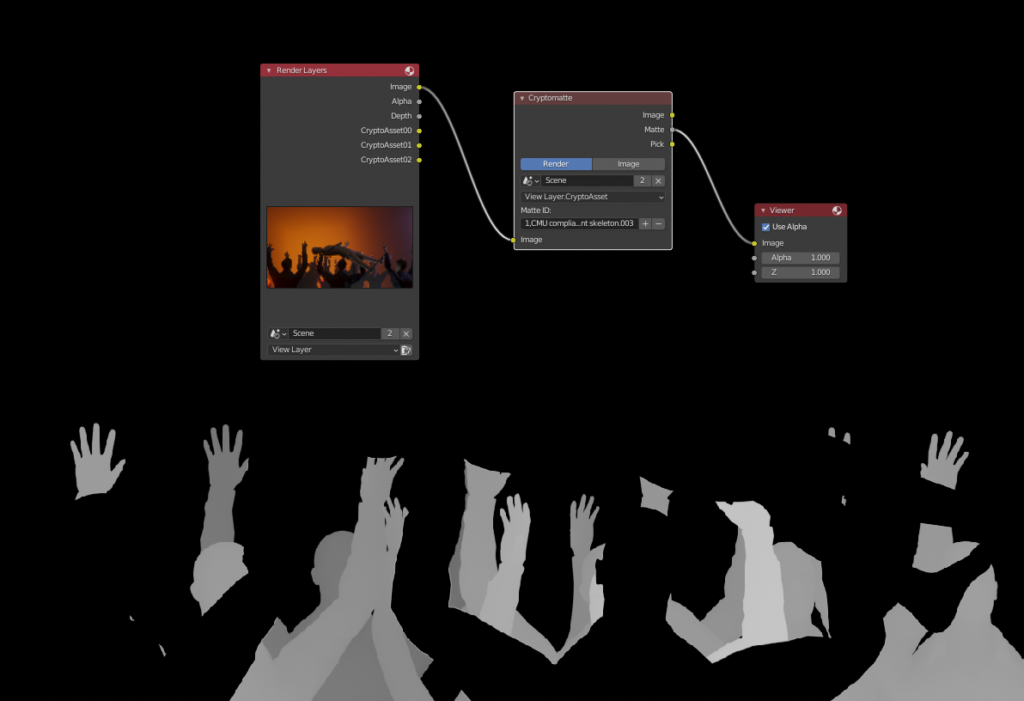
Now you have a matte that you can use in various way when you are compositing. As a simple example, you could color correct the matted area by combining two copies of the input image with the “AlphaOver” node while using the matte as the factor. Then simply drop a color correction node like RGB curves between the bottom image connection.
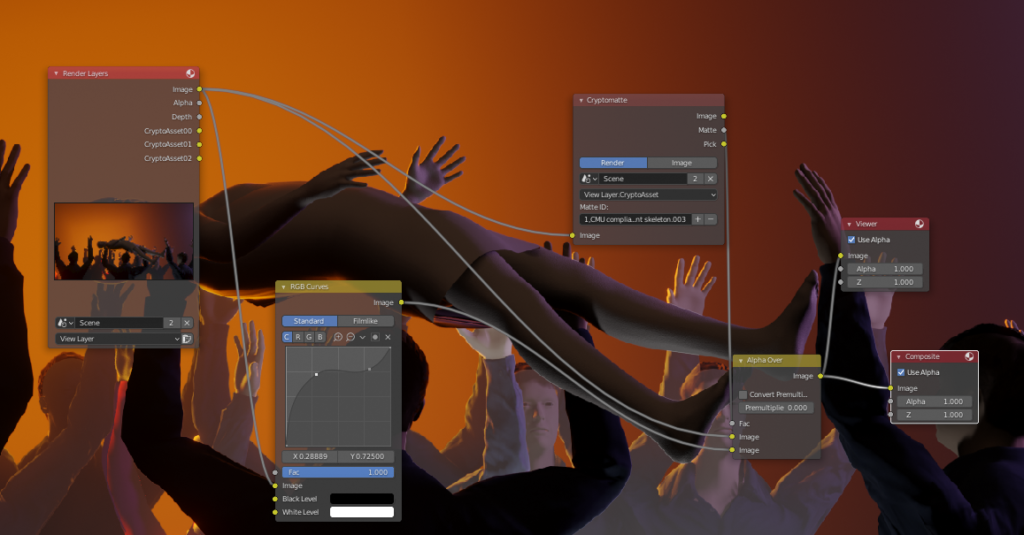
Blender Video Editor Tips
Blender, being the Swiss-army-knife -tool that it is, can also do video editing. Setting up a video editing layout is easier than ever with the new “Workspace” -system of Blender. Simply click on the + button at the end of the workspace tabs and choose Video Editing –> Video Editing. Here’s a picture:

When using Blender as a video editor, a couple of questions immediately come to mind:
- How do I perform a cut? Answer: Simply press K.
- How do I perform a ripple delete (an edit in which the gap of the deleted content is automatically closed)? Answer: There is no ripple edit feature at the moment, but it can still be done very quickly by hitting “Del” to delete, then “Page up” to jump the playhead to the previous cut and finally “Backspace” to “Close gap”.
- How can I “render the timeline” for better playback performance? Answer: The best way might be to create Proxies. In the Proxy workflow, Blender will create new, better performing versions of your video files and use them for better work speed. These are the steps you need to take to enable Proxies in Blender Video Editor:
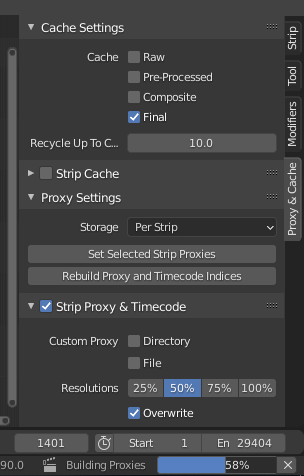
First find the Proxy Panel. It lives usually on the right side of the Sequencer (timeline looking panel). Select the clips you want to create a proxy for in the sequence. Click on “Set selected strip proxies” to set these clips up for proxy creation. It will ask for a desired proxy resolution. Then click “Rebuild Proxy and Timecode Indices”. Blender should now start creating the proxy files, next to your original files (although this location can be changed in the settings). It might take a while, but after it’s done, your playback should be much better.
Quick PBR texture setup with Node Wrangler
Thanks to 3DTudor for this quick tip that can greatly speed up your texturing workflow! It’s based on first activating the Node Wrangler addon (comes with Blender) and then hitting shift+ctrl+T. The principled shader should be selected when you hit the shortcut.
How to render a stereoscopic 360 animation from Blender EEVEE
Rendering out stereo 360 from Blender EEVEE is actually pretty easy thanks to the new eeVR addon.
Random object colors in Blender EEVEE
Hair modeling tips for Blender
I have recently been doing hair renders in Blender and thought I would share some key tips that I have learned along the way:
- Use multiple particle systems. If you put all your hair in just one particle system, it becomes really tedious to edit the hair. You’ll end up combing hair that you didn’t mean to etc.
- Place the hair manually in hair edit mode (with the add hair brush). So set the initial amount to zero in the particle settings. Comb after every round of hair.
- Use simple children instead of interpolated, they are much easier to handle in the edit mode.
- To make the interpolated children more fluffy, increase the “radius” value.
- Be careful with the Path –> steps value, large values made my Blender crash.
- Use the Hair BSDF if you are rendering with Cycles. As of now that won’t work for Eevee so you’ll need to create your own shader for Eevee.
- Subdivide the roots of your hair in edit mode, because the hair needs more bend right where it comes out from the head. Also use enough keys when creating the hair strands.
Using Blender as a vector drawing program
I’m currently working on a project in which I need to create a lot of vector drawings. After trying Inkscape for a moment and having some frustrations with the user interface there, I decided to return to my favorite software: Blender. In this post I will document the things I learn while using the grease pencil tool to create vector art in Blender.
Continue reading “Using Blender as a vector drawing program”Modeling the One Minute Video Tutorials Logo in Blender 2.8 using curves
Creating your first Python script in Blender
In this tutorial we take you through creating a python script that will perform the typical initial steps for setting up mirror-modifier based box modeling work:
Continue reading “Creating your first Python script in Blender”
